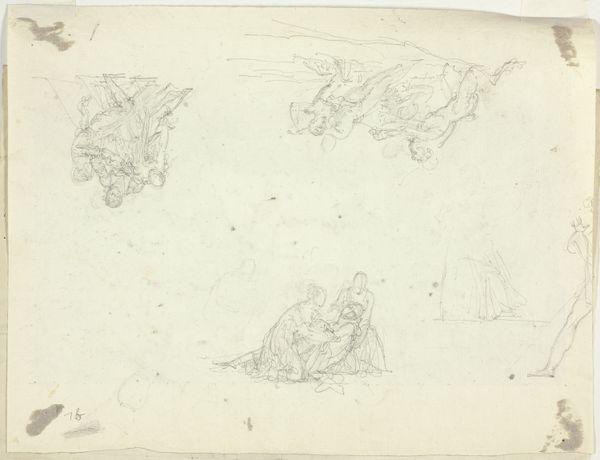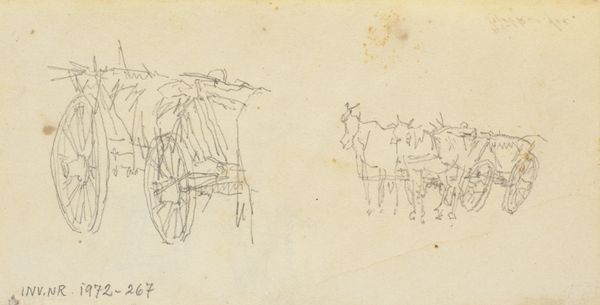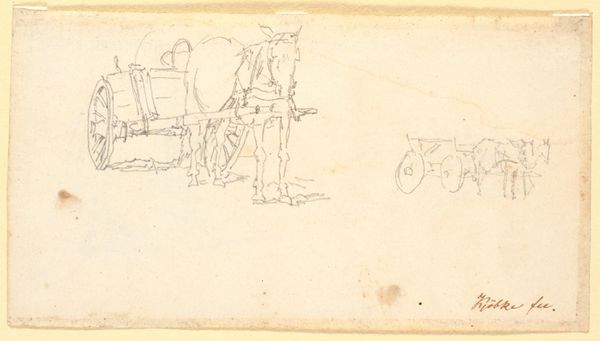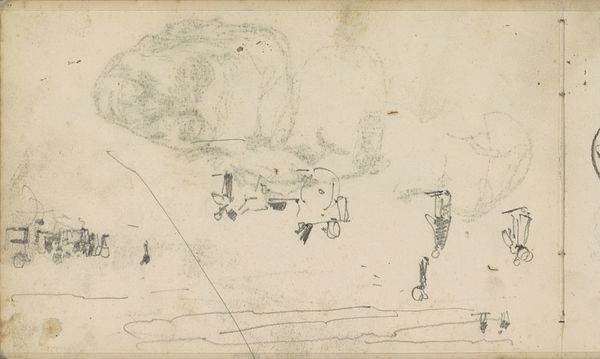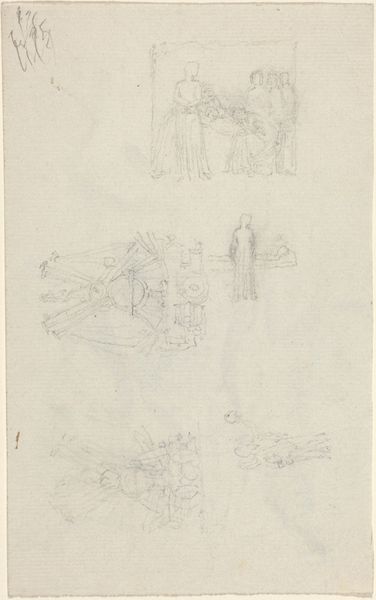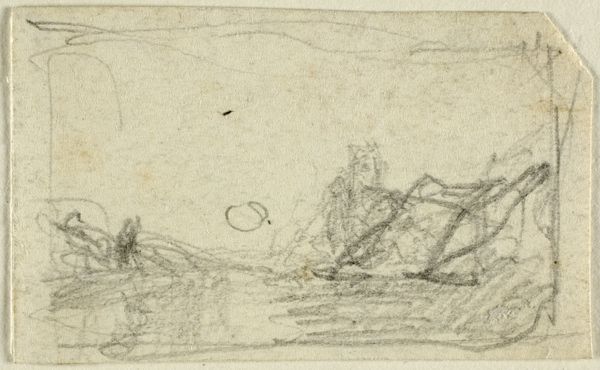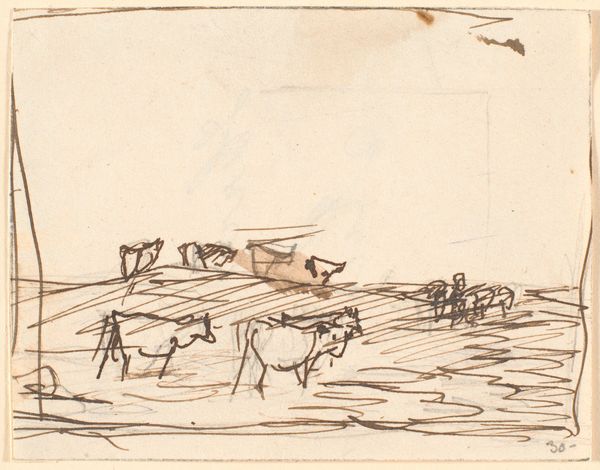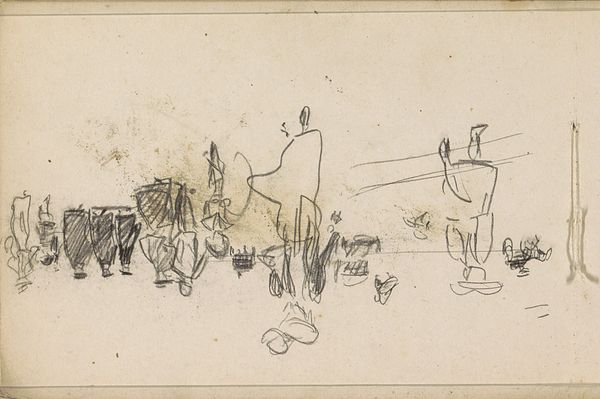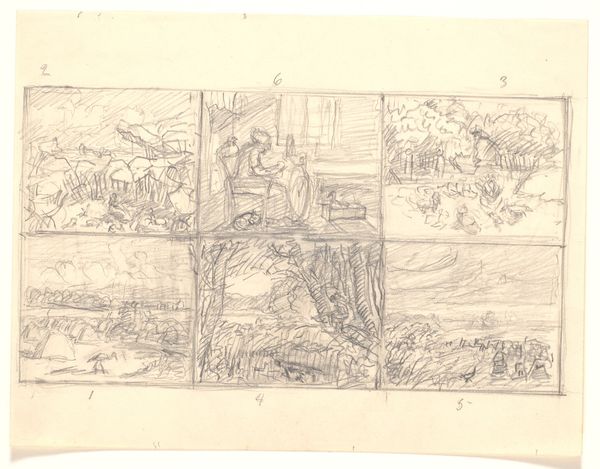
drawing, pencil
#
drawing
#
toned paper
#
light pencil work
#
quirky sketch
#
dutch-golden-age
#
landscape
#
figuration
#
personal sketchbook
#
sketchwork
#
ink drawing experimentation
#
pencil
#
sketchbook drawing
#
watercolour illustration
#
storyboard and sketchbook work
#
sketchbook art
Dimensions: height 206 mm, width 296 mm
Copyright: Rijks Museum: Open Domain
Curator: Ah, look at this! It's a sketch leaf with a waterside view and figures by Wouter Schouten, around 1660, all in pencil. Editor: It's like catching a daydream, isn't it? So light and airy. A whisper of a scene. You almost feel the breeze. Curator: It really captures the atmosphere. Schouten was sketching during the Dutch Golden Age, a period of significant social upheaval, driven in part by the expansion of the Dutch East and West India Companies, their aggressive imperialistic ambitions, and the growth of their participation in the Transatlantic Slave Trade. There's a strong connection between economic growth and exploitation in these pictures. The light-hearted character that these images suggest hides an important element of global politics. Editor: Yes, exactly, light-heartedness! Almost naive in its carefree attitude, yet rendered with a delicate hand, it seems the artist did find something compelling in the world he saw. There's a sweetness here. The almost dreamlike softness might lead some to call this piece a quaint relic. And there may well be some merit to the charge, given the economic engine of 17th-century Dutch art was, on some level, also a story of stolen labour and subjugation, however, as a piece of craftsmanship, it is undeniable. The work hints at a much broader, much more complicated, dynamic. Curator: Exactly. This type of rendering captures a reality often ignored by history. Schouten isn't painting grand pronouncements or flattering portraits. He captures an essence, of the time. Editor: I wonder, who were these people in the upper sketches? What were their lives like? Were they landowners or just workers? Do we consider these dynamics carefully when discussing pieces from the Golden Age? I mean, what's your perspective on this? Curator: I agree. These figures, small as they are, stand in stark opposition to what we usually encounter, with history celebrating only powerful leaders. There's such quiet power in acknowledging ordinary life. But I guess there's always an undercurrent to everything, isn't there? Even the most tranquil scenes carry the weight of their time. Editor: Perhaps art, even in its simplest sketch form, serves as a mirror, reflecting not only the surface but also the depths of society. I am leaving this experience feeling grateful and even invigorated to think more critically about this topic. Curator: Yes.
Comments
No comments
Be the first to comment and join the conversation on the ultimate creative platform.

